As cyber threats continue to evolve and become more sophisticated, the need for advanced cybersecurity measures has never been greater. Artificial Intelligence (AI) is at the forefront of this battle, offering powerful tools that enhance security, detect threats, and protect sensitive data. In this article, we’ll explore the best AI tools for improving cybersecurity, detailing their features, benefits, and how they can help safeguard your digital assets.
Understanding AI in Cybersecurity
Before delving into specific tools, it’s important to understand how AI is applied in cybersecurity. AI enhances traditional security measures by:
- Automating Threat Detection: AI can analyze vast amounts of data to identify patterns and anomalies that may indicate a security threat.
- Predicting and Preventing Attacks: Through machine learning, AI can predict potential threats and take proactive measures to prevent them.
- Enhancing Response Times: AI can respond to threats in real-time, reducing the time it takes to mitigate an attack.
- Reducing Human Error: Automated systems reduce the risk of human error, which is often a significant factor in security breaches.
Top AI Tools for Cybersecurity
Here are some of the best AI tools that are making a significant impact on cybersecurity:
1. Darktrace
.webp)
Darktrace is a pioneer in using AI for cybersecurity, specializing in threat detection and response. Its self-learning AI technology continuously monitors network behavior to identify anomalies, ensuring that both known and unknown threats are detected in real-time. Darktrace’s Autonomous Response capability enables it to automatically respond to detected threats, isolating affected areas to prevent further spread and mitigating potential damage. This proactive approach not only reduces the need for manual intervention but also ensures that the security measures adapt and evolve with the network, offering enhanced protection against a wide array of cyber threats.
- Key Features:
- Self-Learning AI: Continuously learns from your network’s behavior to detect anomalies.
- Threat Detection: Identifies both known and unknown threats.
- Autonomous Response: Automatically responds to threats, isolating affected areas to prevent spread.
- Benefits:
- Real-time threat detection and response.
- Reduces the need for manual monitoring.
- Adaptive learning improves over time.
2. Cylance
Cylance leverages AI and machine learning to provide predictive threat analysis and prevention. Its AI-driven approach focuses on identifying potential threats before they occur by analyzing behavior patterns and detecting anomalies. Cylance’s technology offers comprehensive endpoint protection, ensuring that devices are safeguarded against malware, ransomware, and other cyber threats. The tool’s lightweight nature ensures minimal impact on system performance, making it an ideal choice for businesses looking to enhance their security measures without compromising efficiency. By proactively preventing attacks and reducing false positives, Cylance enhances the overall security posture of any organization.
- Key Features:
- Predictive Analysis: Identifies potential threats before they occur.
- Behavioral Monitoring: Analyzes behavior patterns to detect anomalies.
- Endpoint Protection: Provides comprehensive security for endpoint devices.
- Benefits:
- Proactively prevents cyber attacks.
- Reduces false positives with accurate threat detection.
- Lightweight and non-intrusive, ensuring minimal impact on system performance.
3. Vectra AI
Vectra AI specializes in network traffic analysis to detect and respond to cyber threats. Its AI-driven technology monitors network activity to identify suspicious behavior and anomalies that could indicate a security threat. Vectra AI provides real-time threat detection and response, ensuring that threats are identified and mitigated swiftly. Additionally, it offers AI-driven insights that provide actionable intelligence for security teams, enhancing their ability to respond to incidents effectively. By improving visibility into network activity and automating routine tasks, Vectra AI helps organizations maintain robust network security and reduces the workload on security personnel.
- Key Features:
- Network Traffic Analysis: Monitors and analyzes network traffic for suspicious activity.
- Threat Detection and Response: Identifies and responds to threats in real-time.
- AI-Driven Insights: Provides actionable insights for security teams.
- Benefits:
- Improved visibility into network activity.
- Faster threat detection and response.
- Reduces the workload on security teams by automating routine tasks.
4. IBM QRadar
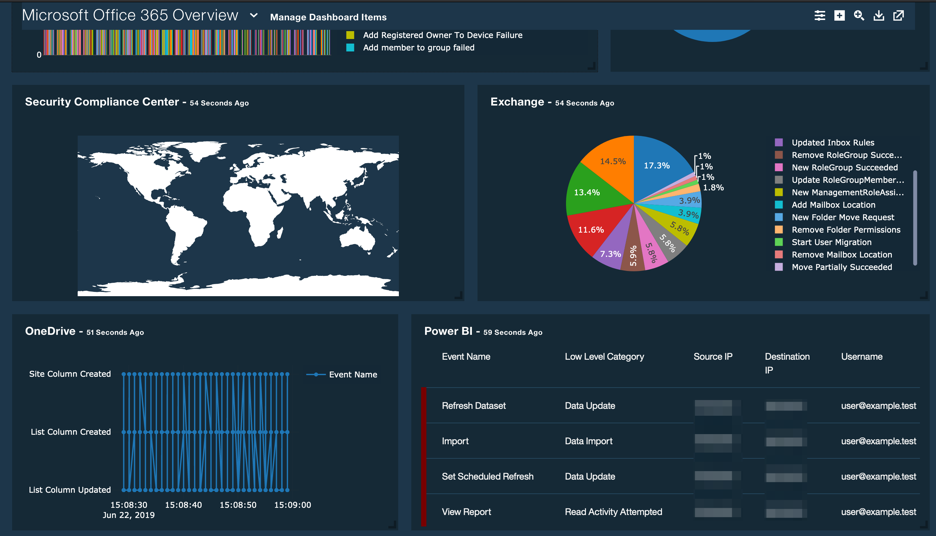
IBM QRadar is a comprehensive Security Information and Event Management (SIEM) tool that leverages AI to enhance threat detection and response. It analyzes logs and network flow data to identify security threats, using AI-driven correlation to detect complex attacks that might otherwise go unnoticed. IBM QRadar’s automated response capabilities enable it to quickly address detected threats, reducing the time it takes to mitigate incidents. The tool’s centralized security monitoring and scalable architecture make it suitable for large enterprises, providing enhanced visibility and control over security operations. By integrating data from various sources, IBM QRadar offers a holistic view of an organization’s security posture.
- Key Features:
- Log and Flow Analysis: Analyzes logs and network flow data to identify threats.
- AI-Driven Correlation: Correlates data from various sources to detect complex threats.
- Automated Response: Automates response to detected threats.
- Benefits:
- Centralized security monitoring.
- Enhanced threat detection with AI-driven analysis.
- Scalable solution suitable for large enterprises.
5. FortiAI

FortiAI, developed by Fortinet, utilizes deep learning models to enhance threat detection and response. Its AI-driven technology analyzes network behavior in real-time to identify and respond to threats as they occur. FortiAI’s incident analysis capabilities provide detailed insights into security incidents, enabling security teams to understand the nature of threats and take appropriate actions. By improving accuracy in threat detection and reducing response times, FortiAI helps organizations maintain a high level of security. Its deep learning approach ensures that the tool continuously adapts to new threats, offering robust protection against a wide range of cyber threats.
- Key Features:
- Deep Learning: Uses deep learning models to identify and respond to threats.
- Inline Threat Detection: Detects threats as they occur in real-time.
- Incident Analysis: Provides detailed analysis of security incidents.
- Benefits:
- Improved accuracy in threat detection.
- Faster incident response times.
- Reduces the burden on security teams with automated analysis.
6. Sophos Intercept X

Sophos Intercept X integrates AI to provide advanced endpoint protection. Its deep learning technology detects both known and unknown malware by analyzing behavior patterns and identifying anomalies. Sophos Intercept X offers comprehensive ransomware protection through behavioral analysis, preventing ransomware attacks before they can cause damage. The tool also includes exploit prevention features that block techniques commonly used by attackers to compromise systems. Easy to deploy and manage, Sophos Intercept X provides robust security for endpoint devices, ensuring that businesses are protected against a wide array of cyber threats while maintaining system performance.
- Key Features:
- Deep Learning Technology: Detects both known and unknown malware.
- Ransomware Protection: Prevents ransomware attacks with behavioral analysis.
- Exploit Prevention: Blocks exploit techniques used by attackers.
- Benefits:
- Comprehensive endpoint security.
- Protects against a wide range of cyber threats.
- Easy to deploy and manage.
7. CrowdStrike Falcon
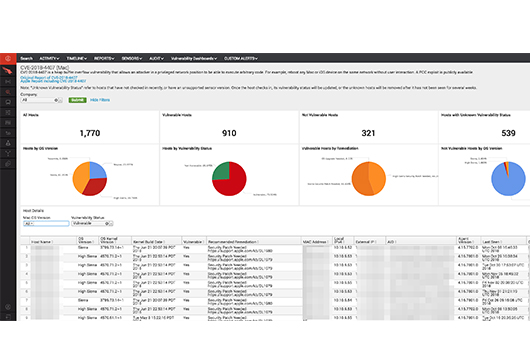
CrowdStrike Falcon is a cloud-based AI tool designed for endpoint protection and threat intelligence. Its AI-driven technology provides real-time threat intelligence, analyzing behavior patterns to detect and respond to threats. CrowdStrike Falcon’s cloud-based management platform allows for centralized control and monitoring, making it scalable and flexible for organizations of all sizes. The tool’s lightweight nature ensures minimal impact on endpoints, allowing for quick deployment and efficient operation. Continuous updates and real-time threat intelligence ensure that CrowdStrike Falcon stays ahead of emerging threats, providing comprehensive protection for endpoint devices.
- Key Features:
- Threat Intelligence: Provides real-time threat intelligence.
- Behavioral Analysis: Detects threats based on behavior patterns.
- Cloud-Based Management: Centralized management from the cloud.
- Benefits:
- Scalable and flexible solution.
- Quick deployment with minimal impact on endpoints.
- Continuous updates with real-time threat intelligence.
8. Sumo Logic
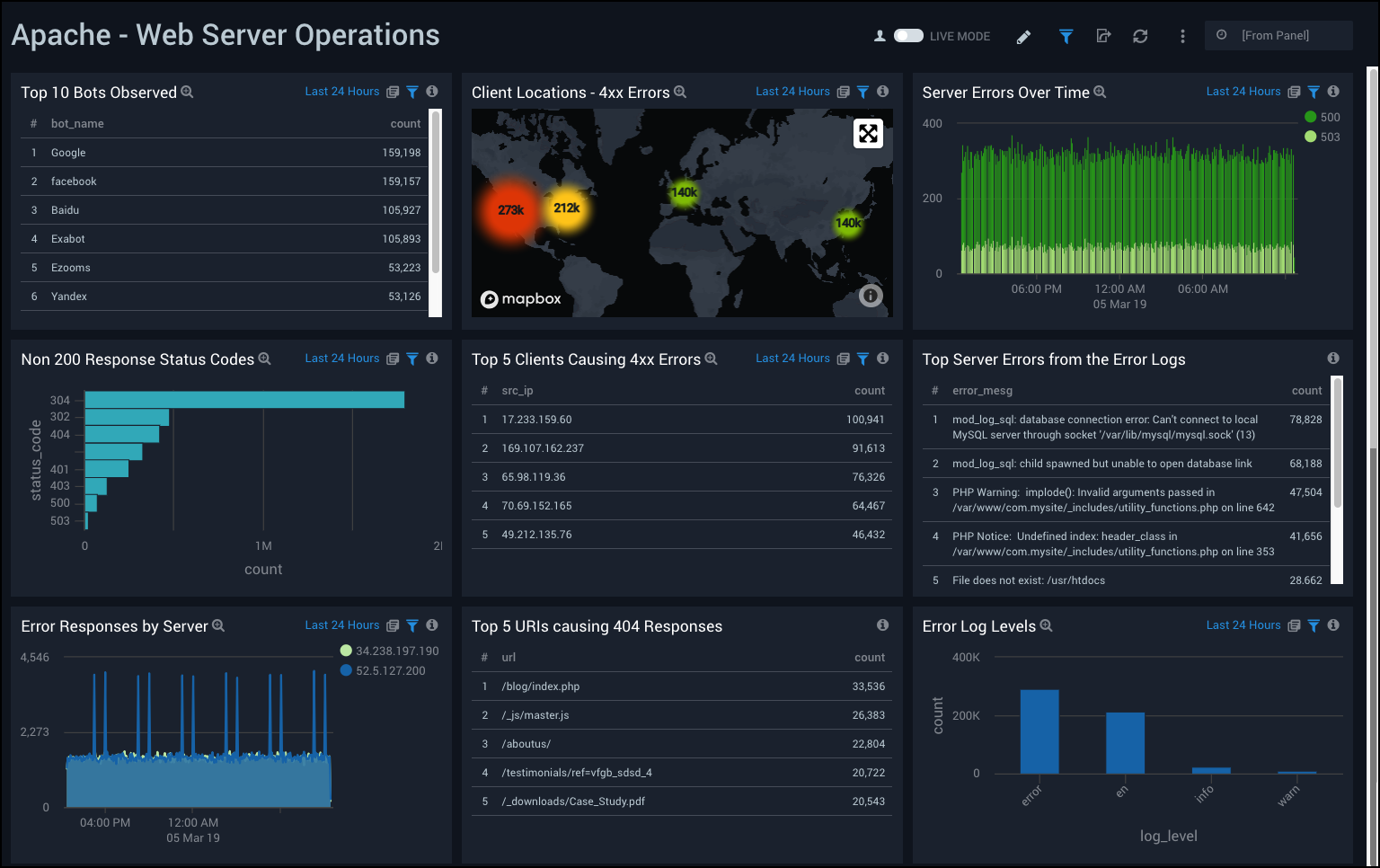
Sumo Logic leverages AI and machine learning to provide security analytics and insights. Its continuous intelligence platform offers real-time security insights, enabling organizations to detect and respond to threats proactively. Sumo Logic’s anomaly detection capabilities identify unusual patterns and potential threats, enhancing the accuracy of threat detection. The tool’s integrated platform combines security analytics with operational data, providing a comprehensive view of an organization’s security posture. By enhancing visibility into security events and facilitating proactive threat detection and response, Sumo Logic helps organizations maintain robust security and operational efficiency.
- Key Features:
- Continuous Intelligence: Provides real-time security insights.
- Anomaly Detection: Identifies unusual patterns and potential threats.
- Integrated Platform: Combines security analytics with operational data.
- Benefits:
- Enhanced visibility into security events.
- Proactive threat detection and response.
- Integrated solution for comprehensive security monitoring.
9. FireEye Helix
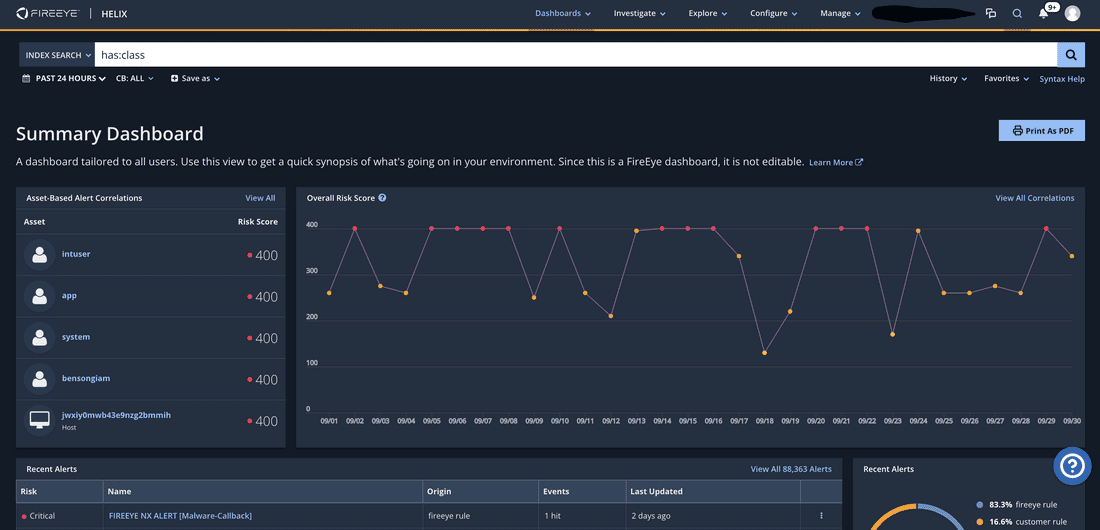
FireEye Helix combines AI with advanced analytics to provide a robust security operations platform. Its AI-driven technology integrates threat intelligence into security operations, enabling real-time threat detection and response. FireEye Helix’s automated response capabilities streamline the process of addressing detected threats, reducing the time it takes to mitigate incidents. The tool’s comprehensive analytics provide detailed insights into security events, helping security teams understand the nature of threats and take appropriate actions. Scalable and suitable for organizations of all sizes, FireEye Helix enhances the efficiency and effectiveness of security operations.
- Key Features:
- Threat Intelligence Integration: Incorporates threat intelligence into security operations.
- Automated Response: Automates responses to detected threats.
- Comprehensive Analytics: Provides detailed analysis of security events.
- Benefits:
- Streamlined security operations.
- Faster detection and response to threats.
- Scalable solution for organizations of all sizes.
10. Microsoft Azure Sentinel
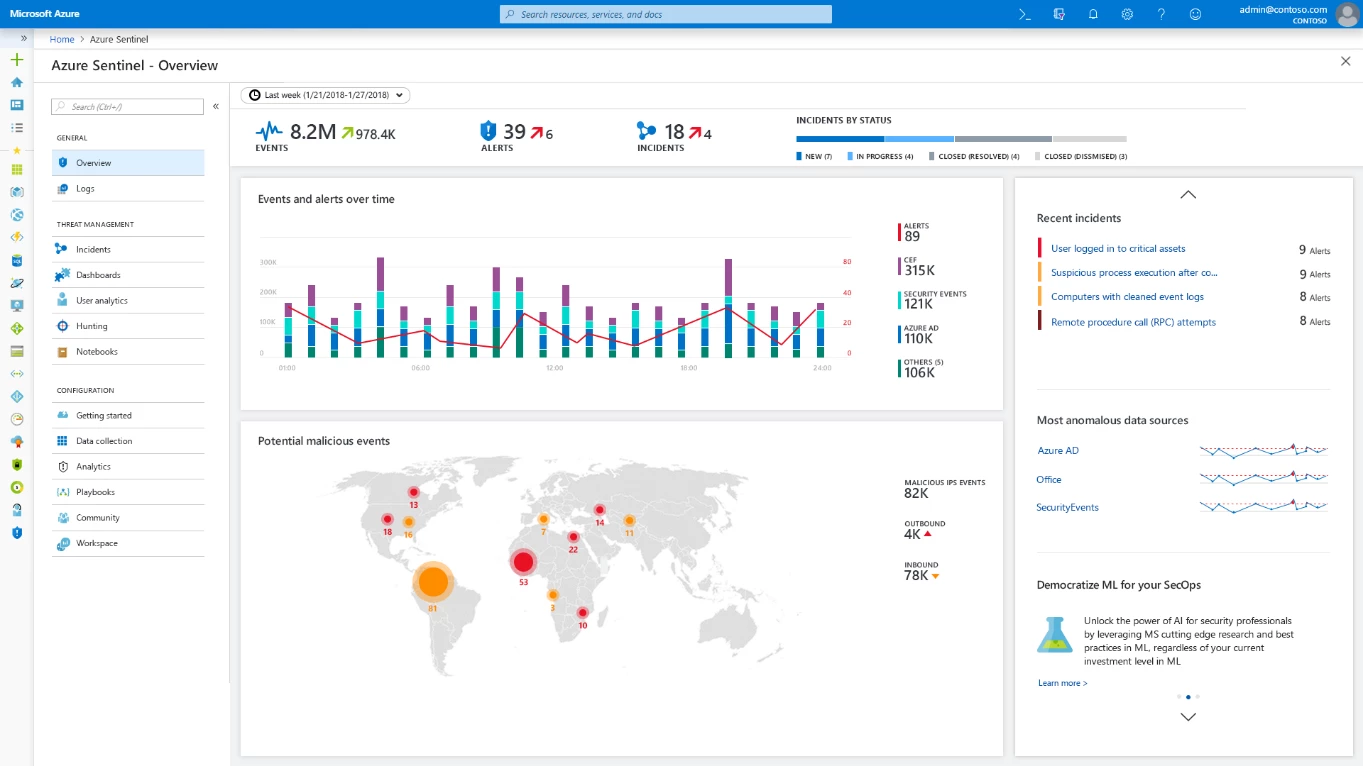
Microsoft Azure Sentinel is a cloud-native SIEM tool that leverages AI to enhance security operations. Built for the cloud, Azure Sentinel provides seamless integration with a wide range of Microsoft and third-party services. Its AI-powered analytics enable real-time threat detection and response, ensuring that security incidents are identified and mitigated swiftly. Azure Sentinel’s automated response capabilities further enhance its effectiveness, allowing for quick and efficient resolution of security threats. The tool’s scalability and flexibility make it suitable for organizations of all sizes, providing comprehensive security monitoring and control in a cloud-based environment.
- Key Features:
- Cloud-Native Architecture: Built for the cloud with seamless integration.
- AI-Powered Analytics: Uses AI to detect and respond to threats.
- Automated Threat Response: Automates responses to security incidents.
- Benefits:
- Scalability and flexibility of a cloud-based solution.
- Enhanced threat detection with AI-driven analytics.
- Integration with a wide range of Microsoft and third-party services.
Benefits of AI in Cybersecurity
Implementing AI tools in cybersecurity offers numerous benefits, including:
- Enhanced Threat Detection
AI’s ability to analyze vast amounts of data and identify patterns allows for more accurate and timely threat detection. This reduces the likelihood of security breaches and minimizes potential damage.
- Proactive Threat Prevention
AI can predict potential threats based on historical data and behavior patterns, allowing organizations to take proactive measures to prevent attacks before they occur.
- Faster Response Times
AI can respond to threats in real-time, significantly reducing the time it takes to mitigate an attack. This quick response is crucial in minimizing the impact of security incidents.
- Reduced Human Error
Automated systems reduce the risk of human error, which is often a significant factor in security breaches. AI ensures consistent and accurate threat detection and response.
- Cost Savings
By automating routine tasks and improving the efficiency of security operations, AI can reduce the overall cost of cybersecurity. This is particularly beneficial for small and medium-sized businesses with limited resources.
Challenges and Considerations
While AI offers significant benefits in cybersecurity, there are also challenges and considerations to keep in mind:
- Implementation Complexity
Integrating AI tools into existing security infrastructure can be complex and may require significant resources and expertise. Proper planning and execution are essential for a successful implementation.
- Data Privacy Concerns
AI tools rely on large amounts of data to function effectively. Ensuring that this data is handled responsibly and complies with privacy regulations is crucial to maintaining trust and compliance.
- Evolving Threat Landscape
Cyber threats are constantly evolving, and AI tools must be continuously updated and refined to stay effective. Regular updates and ongoing monitoring are essential to maintaining robust security.
The Future of AI in Cybersecurity
The future of AI in cybersecurity looks promising, with ongoing advancements set to further enhance security measures. Here are some trends to watch for:
- Increased Automation
As AI technology continues to improve, we can expect even greater levels of automation in cybersecurity. This will allow security teams to focus on more strategic tasks while AI handles routine monitoring and response.
- Advanced Threat Intelligence
AI will play a crucial role in providing advanced threat intelligence, helping organizations stay ahead of emerging threats. Real-time analysis and predictive capabilities will enable more proactive and effective security measures.
- Integration with Other Technologies
AI will increasingly be integrated with other technologies such as blockchain, IoT, and quantum computing. This integration will create more comprehensive and robust security solutions.
- Ethical AI
As AI becomes more prevalent in cybersecurity, ensuring that it is used ethically and responsibly will be crucial. Transparency, accountability, and compliance with ethical standards will be essential in maintaining trust and effectiveness.
Conclusion
AI is revolutionizing cybersecurity, offering powerful tools that enhance threat detection, prevention, and response. From automated editing and intelligent tagging to advanced effects and facial recognition, AI tools are transforming the landscape of video editing.
By embracing these advancements and leveraging the power of AI, organizations can significantly improve their cybersecurity posture, protect sensitive data, and stay ahead of emerging threats. Whether you’re a small business or a large enterprise, exploring and implementing AI tools can help you achieve a higher level of security and peace of mind in the digital age.
FAQs: AI Tools for Improving Cybersecurity
- What are AI cybersecurity tools?
AI cybersecurity tools are software applications that use artificial intelligence and machine learning to enhance the detection, prevention, and response to cyber threats. These tools analyze large volumes of data to identify patterns and anomalies that may indicate a security threat, enabling faster and more accurate threat detection and response.
- How do AI tools improve cybersecurity?
AI tools improve cybersecurity by:
- Automating Threat Detection: Analyzing data to identify threats in real-time.
- Predicting Threats: Using machine learning to forecast potential attacks.
- Enhancing Response: Providing faster and more accurate responses to incidents.
- Reducing Human Error: Minimizing errors through automation and consistent monitoring.
- What are the key features of AI cybersecurity tools?
Key features of AI cybersecurity tools include:
- Real-Time Threat Detection: Monitoring network and endpoint activity to detect threats as they occur.
- Behavioral Analysis: Analyzing behavior patterns to identify anomalies.
- Automated Response: Automatically responding to detected threats to mitigate damage.
- Threat Intelligence: Providing insights and updates on emerging threats.
- Scalability: Adapting to the needs of different-sized organizations.
- Can AI cybersecurity tools prevent all cyber threats?
While AI cybersecurity tools significantly enhance threat detection and prevention, they cannot guarantee complete protection against all cyber threats. Continuous updates, human oversight, and a multi-layered security approach are necessary to maintain robust security.
- How does Darktrace use AI for cybersecurity?
Darktrace uses self-learning AI technology to continuously monitor network behavior and identify anomalies. Its Autonomous Response capability allows it to automatically respond to threats in real-time, isolating affected areas to prevent further spread and mitigating potential damage.
- What is Cylance, and how does it enhance cybersecurity?
Cylance leverages AI and machine learning to provide predictive threat analysis and prevention. It focuses on identifying potential threats before they occur by analyzing behavior patterns and detecting anomalies. Cylance offers comprehensive endpoint protection, ensuring devices are safeguarded against malware, ransomware, and other cyber threats.
- How does Vectra AI improve network security?
Vectra AI specializes in network traffic analysis to detect and respond to cyber threats. It monitors network activity to identify suspicious behavior and anomalies, providing real-time threat detection and response. Vectra AI also offers AI-driven insights that provide actionable intelligence for security teams.
- What makes IBM QRadar a comprehensive SIEM tool?
IBM QRadar is a comprehensive Security Information and Event Management (SIEM) tool that uses AI to enhance threat detection and response. It analyzes logs and network flow data to identify threats, using AI-driven correlation to detect complex attacks. QRadar’s automated response capabilities quickly address detected threats, and its centralized security monitoring and scalable architecture make it suitable for large enterprises.
- How does FortiAI use deep learning for cybersecurity?
FortiAI uses deep learning models to enhance threat detection and response. Its AI-driven technology analyzes network behavior in real-time to identify and respond to threats as they occur. FortiAI provides detailed insights into security incidents, enabling security teams to understand threats and take appropriate actions.
- What are the benefits of using Sophos Intercept X for endpoint protection?
Sophos Intercept X integrates AI to provide advanced endpoint protection. Its deep learning technology detects both known and unknown malware by analyzing behavior patterns. It offers ransomware protection through behavioral analysis and includes exploit prevention features. Easy to deploy and manage, it provides robust security for endpoint devices.
- How does CrowdStrike Falcon provide real-time threat intelligence?
CrowdStrike Falcon is a cloud-based AI tool for endpoint protection and threat intelligence. It provides real-time threat intelligence by analyzing behavior patterns to detect and respond to threats. Falcon’s cloud-based management platform allows for centralized control and monitoring, making it scalable and flexible for organizations of all sizes.
- How does Sumo Logic enhance security analytics?
Sumo Logic leverages AI and machine learning to provide real-time security insights through continuous intelligence. It identifies unusual patterns and potential threats with anomaly detection capabilities. By combining security analytics with operational data, Sumo Logic offers a comprehensive view of an organization’s security posture.
- What are the key features of FireEye Helix?
FireEye Helix combines AI with advanced analytics to provide a robust security operations platform. It integrates threat intelligence into security operations, offering real-time threat detection and response. Helix’s automated response capabilities streamline the process of addressing detected threats, and its comprehensive analytics provide detailed insights into security events.
- How does Microsoft Azure Sentinel leverage AI for cybersecurity?
Microsoft Azure Sentinel is a cloud-native SIEM tool that uses AI to enhance security operations. It provides real-time threat detection and response through AI-powered analytics and automates responses to security incidents. Azure Sentinel’s cloud-native architecture offers seamless integration with various Microsoft and third-party services, making it scalable and flexible for organizations of all sizes.
- What are the challenges of implementing AI tools in cybersecurity?
Challenges of implementing AI tools in cybersecurity include:
- Implementation Complexity: Integrating AI tools with existing infrastructure can be complex.
- Data Privacy Concerns: Ensuring responsible handling of large amounts of data.
- Evolving Threat Landscape: Continuously updating and refining AI tools to stay effective.
- Cost: High initial investment and ongoing maintenance costs.
- Skills Gap: Need for skilled professionals to manage and operate AI tools effectively.

